Due to an improperly selected diet, even unpretentious fish such as angelfish can get sick and lose their wonderful appearance. It is important that the food is varied, and then you do not have to worry about the health of your pets.
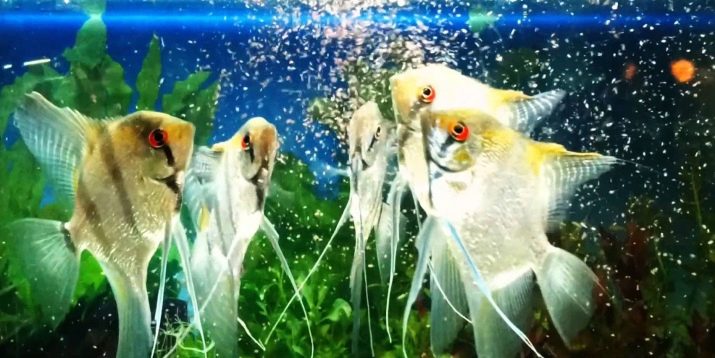
What kind of food does the scalar prefer?
Fish willingly eat any live food, especially they are useful during the period when angelfish spawn. However, this type of feeding has three significant disadvantages:
- it is not always on sale;
- may be spoiled;
- often causes infectious infections.
The number of microorganisms that fish love to feast on include:
- larvae amphibians and mosquitoes;
- copepods and small planktonic crustaceans;
- coretters - larvae of necro-sucking mosquitoes;
- pipe makers - low-filament filiform worms;
- mormyshes - freshwater amphipods belonging to the arthropod family.
But in-kind, these "dishes" of scalars cannot be served - previously the food is frozen or bought already frozen, with the exception of the tubifex, because after freezing the bodies of crustaceans turn into a continuous mess. It is also dangerous to feed fish with a self-caught bloodworm, as there is always a risk of infection.
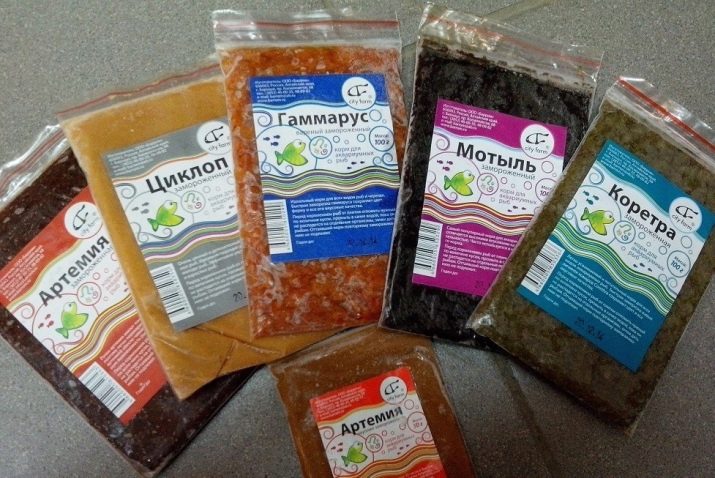
Can be purchased in specialty stores for fishermen and freeze yourself. First, the crustaceans are subjected to heat treatment in the microwave (for 2 minutes), after they turn red, they are placed in the freezer.Before giving food to fish, it must be thawed and kept at room temperature for some time (food should not be given cold).
Mormysh is more suitable for large specimens, but it is better not to feed your pets with a dried product (just like daphnia). So experienced aquarists believe, believing that they have nothing useful for decorative fish.
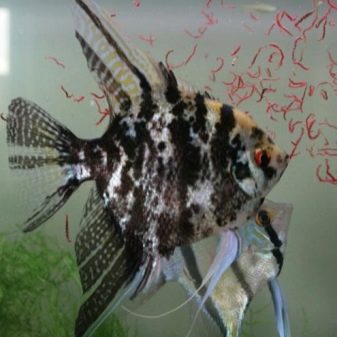

Other types of food
At home, it is customary to feed a scalar with dry plant food, as well as minced meat of its own preparation. This is necessary for the health of adults and for the rapid growth of young fish.
No less than living, scalars love dry food (dried daphnia, brine shrimp, gammarus). They are produced in the form of flakes and granules, but, according to the experience of breeders, the fish prefers flakes. In addition, this food does not clog the water in the aquarium. The main advantage of a dried product is balanced composition containing minerals and vitamins necessary for the body of an aquatic animal. Serving needed dosed so that they are completely eaten.
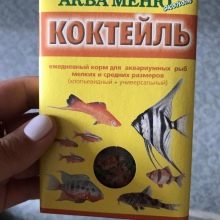
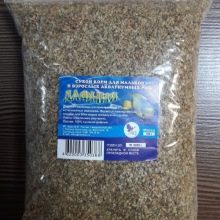
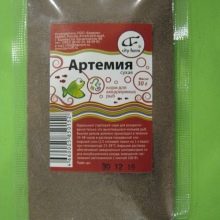
It is important to periodically feed the scalar with plant foods that support their immunity and are necessary for normal digestion. To do this, once a week, the fish are given fresh herbs of such aquarium plants as:
- hepatic moss (riccia);
- rootless algae wolfia from the duckweed subfamily;
- flowering aquatic plant - duckweed.
Some aquarists give their wards scalded leaves of white cabbage, lettuce. If the scalar refuses the proposed options, a way out of the situation will be a special feed for herbivorous inhabitants of aquariums, produced in granules.
There are tricks to feeding scalars: at first they are given less tasty food, for example plants, and only then frozen live food, which is a treat for them. If you do the opposite, after daphnia or coronetra pet is unlikely to eat grass or moss. Plants supplement the diet once every 7 days.
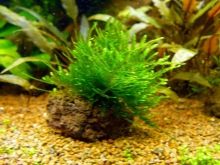
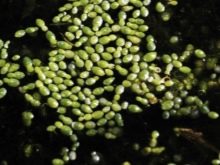
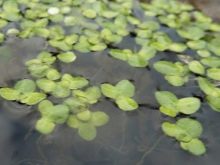
Meat dressing
Along with dry and frozen food, it is useful to diversify the fish menu with beef heart shavings. To do this, it is necessary to cut off fat from it, thoroughly wash and cut into small pieces. They are taken out of the refrigerator, rubbed on a fine grater, rinsed in a strainer to get rid of blood and small particles that the scalar does not eat, throwing itself in large pieces. The food is served warm.
Minced organic food is minced meat, which, in addition to beef heart, includes several other components useful for fish:
- dry pharmacy nettle;
- cabbage leaves;
- Bell pepper;
- seafood (squid, meat of mussels, octopus and shrimp).
For 100 g of meat, the same amount of additional components is taken in equal parts, all products are crushed in a meat grinder or blender, mix well, 1 raw egg is added to the mixture. Then a pancake is formed, which is baked in the microwave for 1-2 minutes. After cooling, it must be placed in the freezer.
The indicator of normal freezing is food that crumbles into small pieces. This is important, because large pieces of scalar can choke, or even not eat them at all.
By the way, these ingredients can easily be replaced with others: meat and seafood - the loin of sea fish, peppers and cabbage - zucchini, canned corn or green peas.
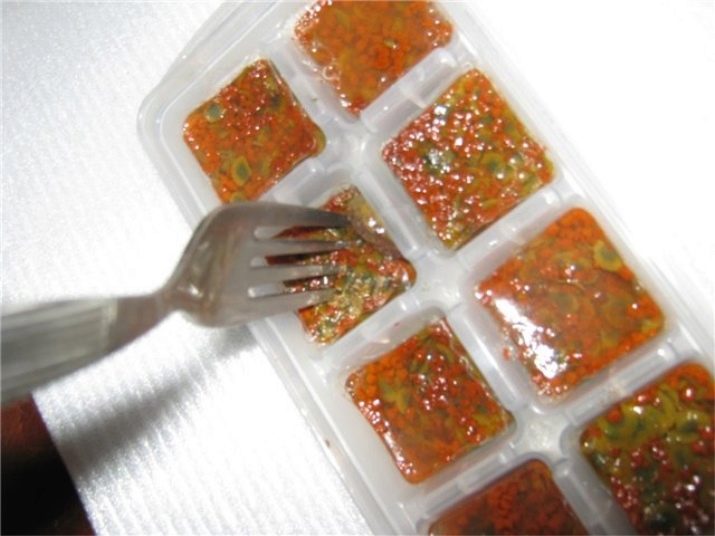
Regarding food a scalar can be extremely finicky - something that she did not like, she could spit out. It is especially difficult to accustom her to new dishes. Experienced aquarists recommend trying again and offering unfamiliar fish food - having hunger for several days, she will still begin to eat the offered products.
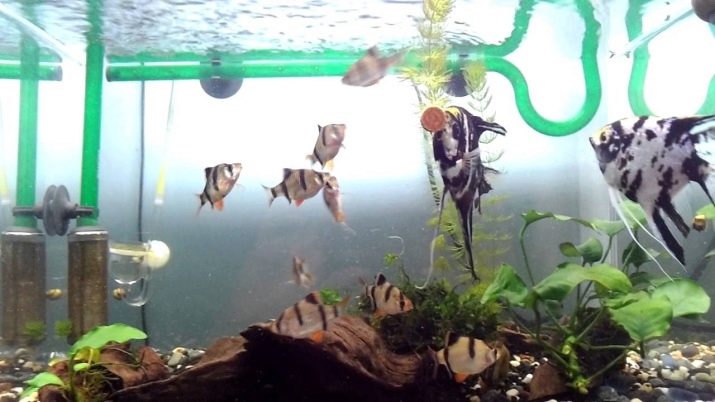
How to feed?
The feeding regimen is important so that the scalar does not feel hungry and at the same time does not overeat. This is due to the fact that a large amount of food is detrimental to the fish’s excessively small stomach.Overfeeding leads to a variety of digestive disorders and may even result in the death of “wards”. If the fish is constantly malnourished, then a dystrophic process may begin, therefore it is important to dose food. As for the feeding schedule, it should be as follows:
- to feed the fry, you need to give them food 3 times a day, at about 3 months young fish are transferred to two meals a day;
- in the future, adults eat 2 or 1 times a day, it all depends on their size and appetite, but it is important that they eat food in 2-3 minutes;
- dry and live food should be alternated with herbal supplements, the main thing is that the wards do not overeat, for this they should arrange a fasting day once a week, that is, do not feed at all.
With regard to feeding the babies that have appeared, you need to start with ciliates and a boiled yolk - this is the best food for them, from which they quickly develop and grow. The boiled product is kept in the freezer when it comes to food, they take it out, break off a piece and pass it with a brush, which is rinsed in a jar of water.
Then they wait until the particles of the yolk settle, drain the water and pour fresh, as a result, it should get rid of the turbidity and become clean. Then the remaining particles and a small amount of water are poured onto the compressor bubbles, and the fry eat them until they settle to the bottom.
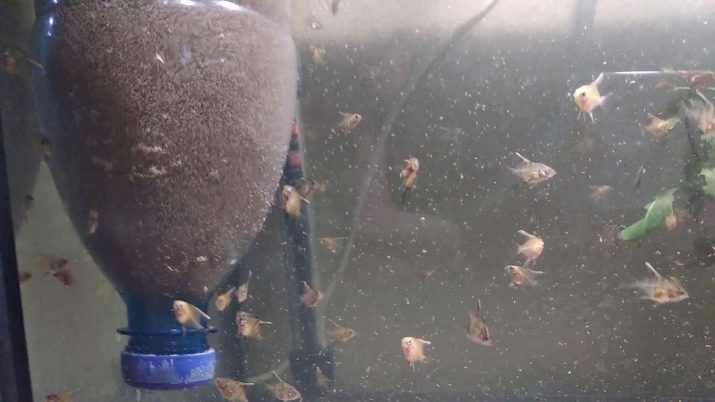
Since the yolk is capable of polluting the water, care for fry consists in the constant purification of water, Incidentally, ampullariums - snails that can perfectly clean the bottom - can help. In addition to live dust and eggs, you can buy special dry mixes for juveniles, and after a week the fry are transferred to gill legged crustaceans - artemia.
High-quality nutrition is an important aspect of the content of scalars, which helps preserve the health of fish and increase their lifespan up to 10 years.
Next, watch a video with tips on feeding scalar live food.










